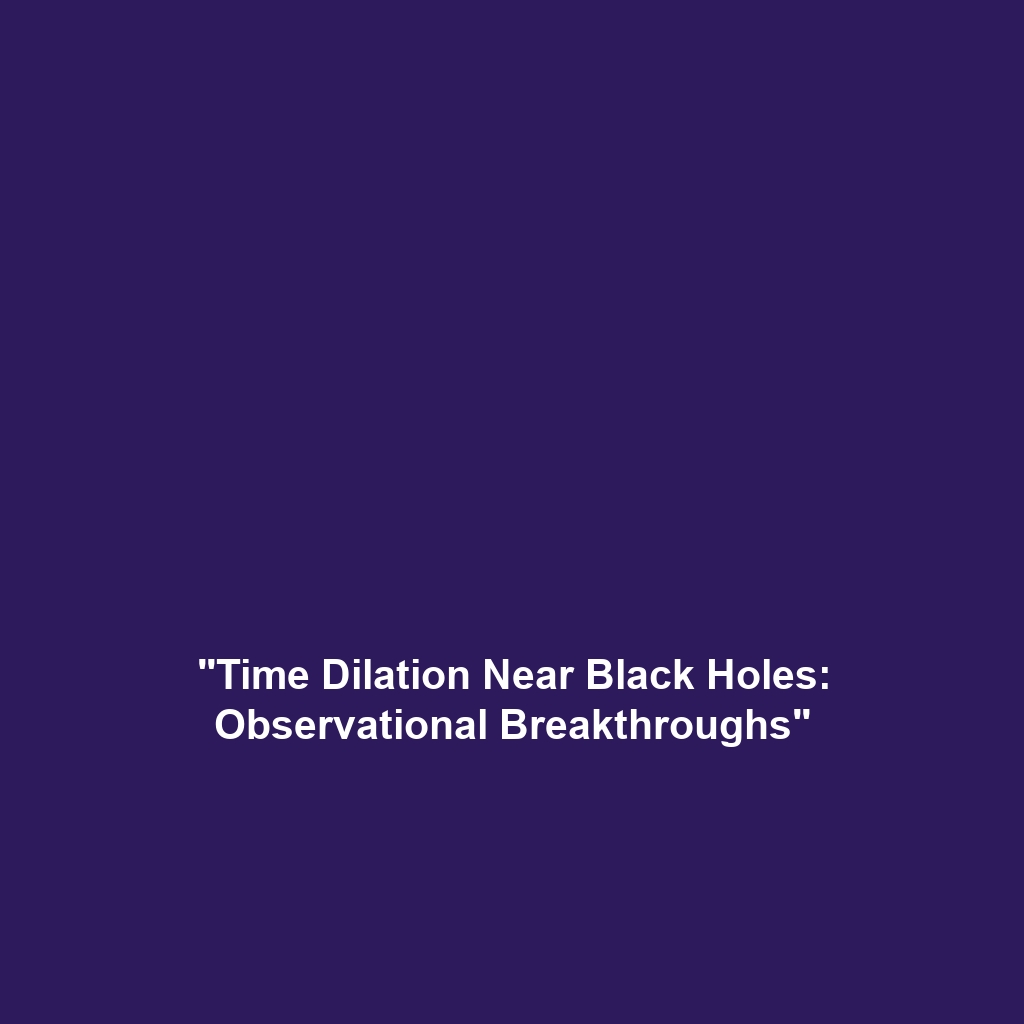Observational Evidence of Time Dilation Effects Near Black Holes
Category: Black Holes
Introduction
The discovery of observational evidence of time dilation effects near black holes is a significant milestone in astrophysics, offering profound insights into the nature of time and space. Time dilation, a phenomenon predicted by Einstein’s theory of relativity, becomes particularly fascinating as it plays out in the extreme gravitational fields surrounding black holes. Understanding these effects not only deepens our comprehension of black holes but also enhances our grasp of fundamental physics. This article explores the latest findings and their implications in relation to black holes.
Key Concepts
1. Time Dilation Explained
Time dilation refers to the difference in elapsed time measured by two observers, due to relative velocities or differences in gravitational potential. Near black holes, where gravity is incredibly strong, this effect is pronounced, illustrating how time can slow down significantly as one approaches the event horizon.
2. Observational Evidence
Studies utilizing advanced telescopes and gravitational wave detectors have provided compelling evidence of time dilation effects. Notable observations include:
- The measurement of time discrepancies in signals from pulsars located near black holes.
- Gravitational lensing effects observed in binary black hole systems.
- Comparative analysis of the light emitted from objects falling into black holes versus those at a safer distance.
Applications and Real-World Uses
The observational evidence of time dilation effects near black holes has significant implications for both theoretical and applied physics. Some key applications include:
- How time dilation is used in black hole research: Enhances understanding of gravitational theories.
- Applications in technology: Development of highly accurate timekeeping systems impacted by gravitational differences.
- Astronomical navigation: Improved methods for predicting the behavior of celestial bodies near black holes.
Current Challenges
The study of observational evidence of time dilation effects near black holes is not without its challenges:
- Challenges of data collection: Difficulty in obtaining reliable measurements due to the extreme environments.
- Issues in theoretical models: Incompatibilities between general relativity and quantum mechanics make interpretation complex.
- Lack of technological advancements for direct observation of time dilation phenomena.
Future Research and Innovations
Emerging technologies and continued research are shaping the future of our understanding of black holes. Upcoming innovations include:
- The development of more sensitive detectors for gravitational waves.
- Next-gen telescopes aimed at observing phenomena closer to black holes.
- Interdisciplinary research combining quantum mechanics and relativity to refine models of time dilation.
Conclusion
In summary, observational evidence of time dilation effects near black holes provides crucial insights into the very fabric of spacetime and deepens our knowledge of black holes. As scientists continue to explore these fascinating cosmic entities, the implications of their findings will undoubtedly transform our understanding of the universe. For more information, consider exploring our related articles on black holes and time dilation.
